Introduced in 2009, the Victoria Line Tube trains have been a huge success story for Transport for London and rolling stock provider Bombardier. In terms of performance, the Victoria Line stock built at Derby Litchurch Lane has been simply phenomenal.
In September 2014, the fleet was recording 176,000 kilometres (109,361 miles) between technical failures. That’s the equivalent of travelling four and a half times around the planet.
The trains are part of Bombardier’s successful Movia family, a product that has been delivered by the company for many of the world’s metro systems including Guangzhou, Shenzhen and Shanghai (China), Budapest (Hungary), Toronto (Canada) and Delhi (India). The Sub-Surface Line (SSL) trains currently being delivered to TfL by Bombardier are also part of the Movia family, as is a new driverless fleet recently delivered for Singapore.
In total, 47 eight-car trains are in traffic on the Victoria Line (VL). Capacity improvements mean that at peak times 43 trains are in traffic (compared with 37 of the older trains).
Although frequency of service is crucial to this major artery of the Underground, the trains themselves do not cover long distances during their rostered duties - the full length of the Victoria Line is only 13 miles from end to end.
The manufacturer agrees that performance benefits are derived from the line being straight, and that the infrastructure is quite new following its recent upgrade. However, this doesn’t negate the fact that delays on the route are measured in seconds - fractions of a second saved can contribute to improvements in service frequency, which is an important consideration for TfL.
The trains form part of a £3.4 billion turnkey contract awarded to Bombardier by the former Metronet consortium to supply 1,738 new vehicles for the Victoria and Sub-Surface Lines, together with signalling, maintenance and project management.
On the Victoria Line, the upgrade enabled TfL to improve reliability and reduce journey times between stations by 8%, with an overall decrease in journey times of 16%. This has been made possible because the trains delivered from 2009 onwards have far better acceleration than the 1967 stock they replaced. The newer trains also have a higher maximum speed of 50mph.
Design of the new Victoria Line trains was finalised in September 2004, with two pre-production trains constructed the following year. Testing began in Derby (where they had been built) in 2006, followed by delivery to LU in May 2007. The first train entered traffic on July 21 2009, working the 2355 Seven Sisters-Brixton.
Main production began at the end of 2009, with one train per fortnight entering traffic from February 2010. The last of the 1967 stock was withdrawn on June 30 2011.
The new trains are wider than those they have replaced, and are marginally larger than other deep-level Tube stock. They have 324 seats and standing capacity for up to 1,196 passengers, which represents a 19% increase in capacity over the 1967 stock.
They are also fitted with wider doors. This allows easier boarding and alighting, thereby improving journey times by reducing dwell times at stations.
LU’s 2009 stock is also the first Tube stock delivered since the introduction of new regulations regarding passengers of reduced mobility, so the fleet offers increased capacity for disabled passengers. This includes more tip-up seats and spaces for both wheelchairs and pushchairs. There are also offset centre door poles for wheelchair access.
The new trains are the longest on the deep-level system, measuring just over 133 metres (437 feet). This makes them three metres (9ft 10 inches) longer than the trains they replaced.
Unlike many other LU fleets the 2009 stock has combined traction/brake controller on the right-hand side of the cab, as that is the side of the majority of platforms on the Victoria Line. Each train features two four-car units comprising a Driving Motor, Trailer, Non-Driving Motor and Uncoupling Non-Driving Motor. These are coupled back to back with another unit.
Maintenance is done at Northumberland Park. Bombardier staff are on site for TSSSA (Technical Support and Spares Supply Agreement), while there was also a supplied warranty parts replacements service that forms part of the new-build supply contract.
Additionally, Bombardier uses its ORBITA system on the Victoria Line fleet. This is an intelligent diagnostics platform that provides train performance data and analysis, including the provision of a health assessment of the train’s systems, and which is supported by a 24/7 technical support team at the depot. There is also a help desk that includes a technical library of all relevant documents, and a spares and key overhaul supply service. The depot carries out routine and corrective maintenance, as well as repairing damage and vandalism.
The fleet’s success has enabled TfL to increase its capacity to 34 trains per hour on the Victoria Line at peak-times, with trains running with headways of less than two minutes. This is the best frequency of any train in the UK, and a worldwide benchmark in terms of metro performance.
LU is able to run more trains running the full length of the line from Brixton to Walthamstow Central, catering for an increase in the number of passengers on the line.
The upgrade to VL’s infrastructure was completed in 2012, and has led to the number of peak trains rising from 28 to 34. As a comparison, the Northern Line (another route that is being upgraded) has 22tph in peak time.
When the VL’s capacity was increased in June 2014, London Mayor Boris Johnson said: “Thanks to state of the art signalling and a brand new fleet of trains, the Victoria Line now holds a national badge of honour as the most frequent train service in the UK.
“From Brixton to Walthamstow Central we have more services running up and down this famous blue line, plus more frequent trains at weekends to ferry an ever-growing number of shoppers, tourists and regular travellers.
“Passengers are starting to see the benefits of increased services and capacity on other major Tube lines, too, with modernisation on the Northern Line also now edging towards completion. With plans on track to reduce delays by 30% by the end of 2015, this is all part of our mission to invest in and deliver improvements across the Tube, to keep London and its economy moving.”
The Victoria Line carries more than 200 million passengers per year, and the success of the new trains sets a challenging target for Bombardier and the industry for future projects.
For example, the manufacturer is evaluating what it needs to do to successfully bid for the New Tube for London project. Some 250 trains will be delivered for the deep-level Tube lines, with the new fleet the first deep-level trains on the Tube network to be fitted with air-conditioning.
This is already fitted to the sub-surface line fleets (the S-Stock), but not the 2009 stock. Nevertheless, it’s not simply a case of building Victoria Line stock with S-Stock air-conditioning.
“You cannot purely take individual components and carry them across. It is much more like putting a hand in a glove, which is to say that a bespoke integration of appropriate and proven solutions is required.
“There are elements of technology and experience we can derive from the Victoria Line and the SSL fleets, and we have to maximise the benefits of each. Reliability is, of course, key,” says the manufacturer.
The statistics for both fleets are already superb in this regard, but TfL wants even more when the next order enters traffic in the next decade.
Figures in excess of 120,000km (74,000 miles) between failures are expected within six months of entering service, and a figure in excess of 50,000km ‘straight out of the box’.
Between 2,000 and 2,500 vehicles could be built, potentially by one manufacturer, making this not only an extremely exciting and important contract, but also one that will be hotly contested within the industry.
For its part, Bombardier is confident that the performance required by the customer can be delivered, and says that the 2009 stock is “proof through the product that we can do it”.
- This feature was published in RAIL 767 on February 4 2015

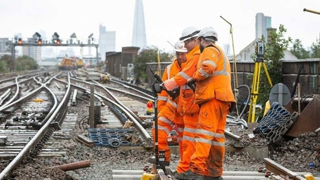
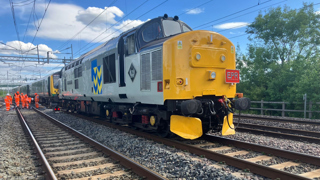
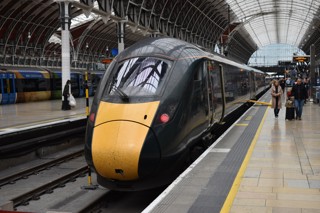
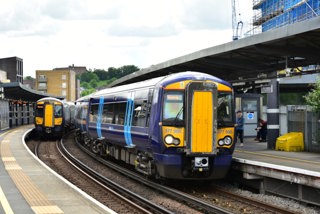
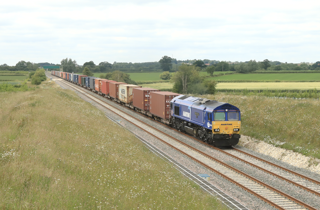










Login to comment
Comments
No comments have been made yet.